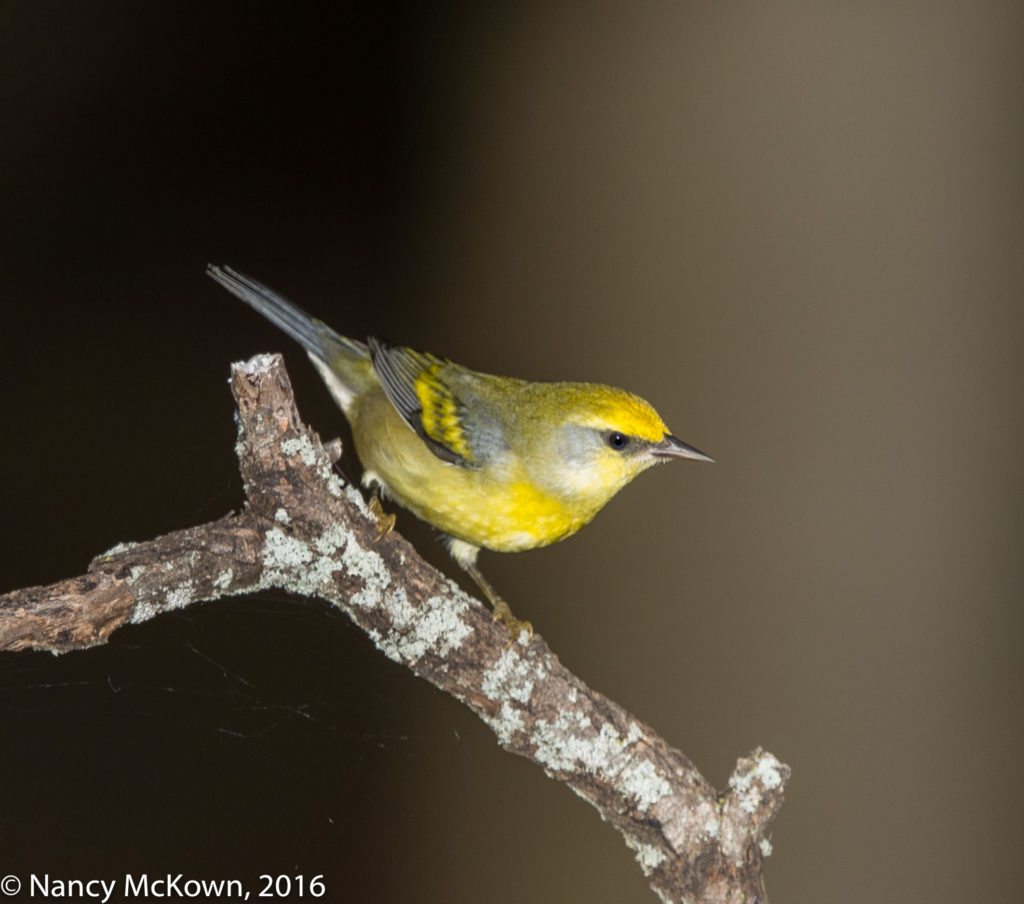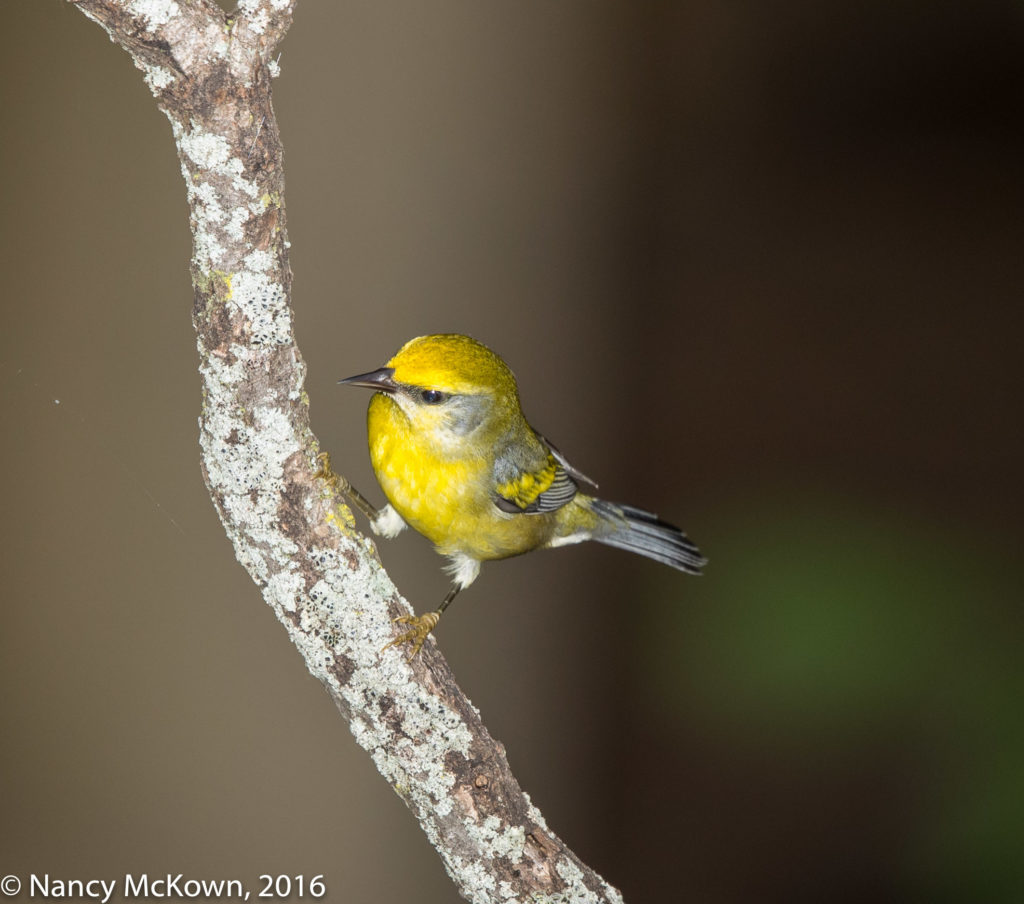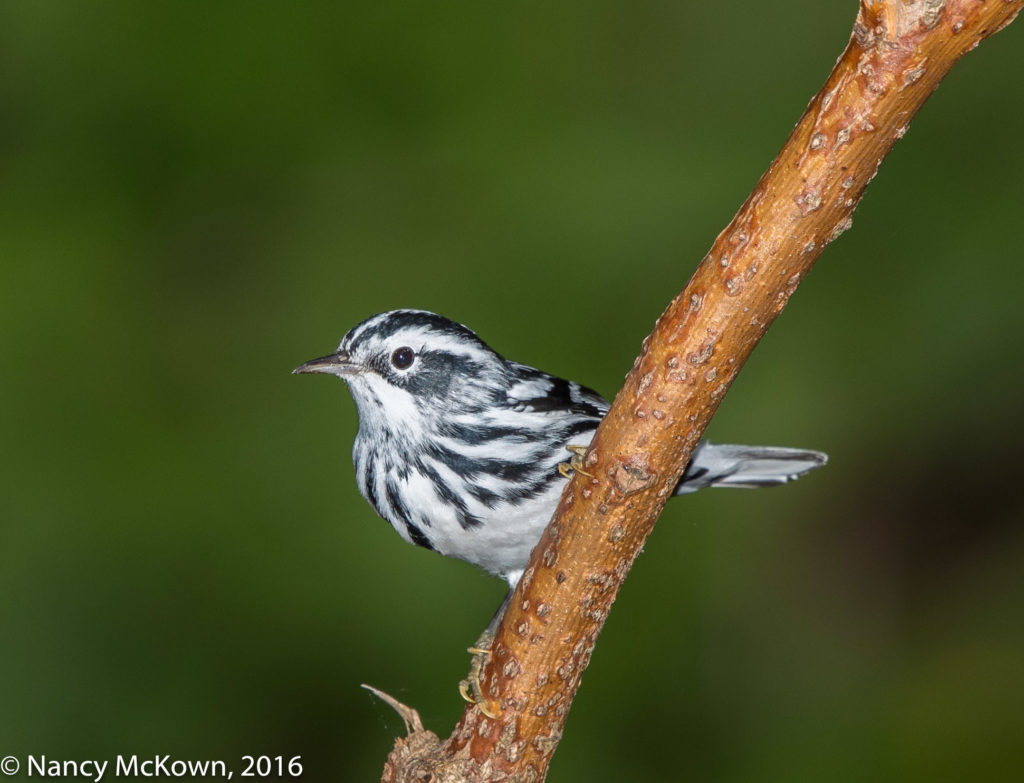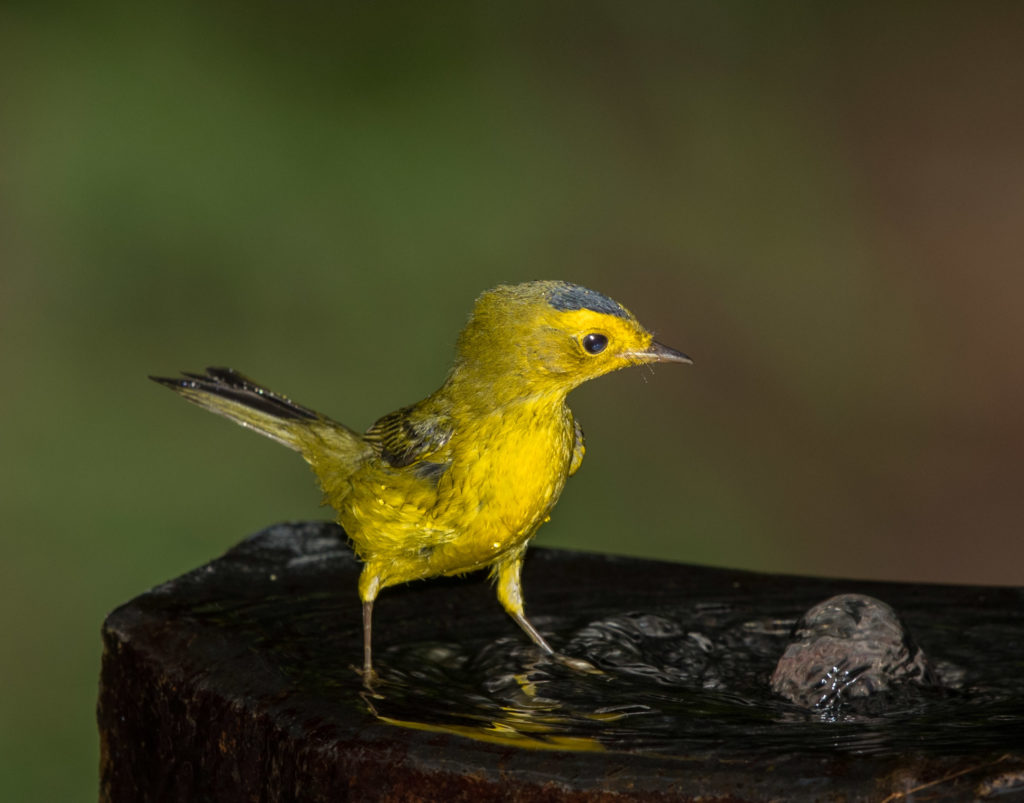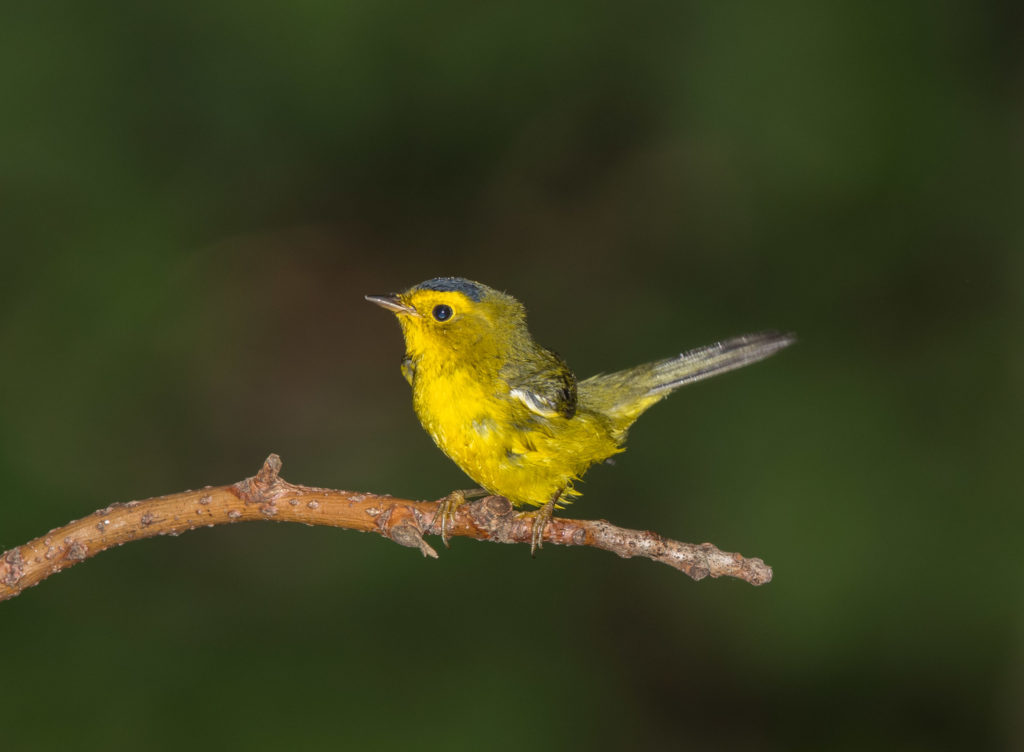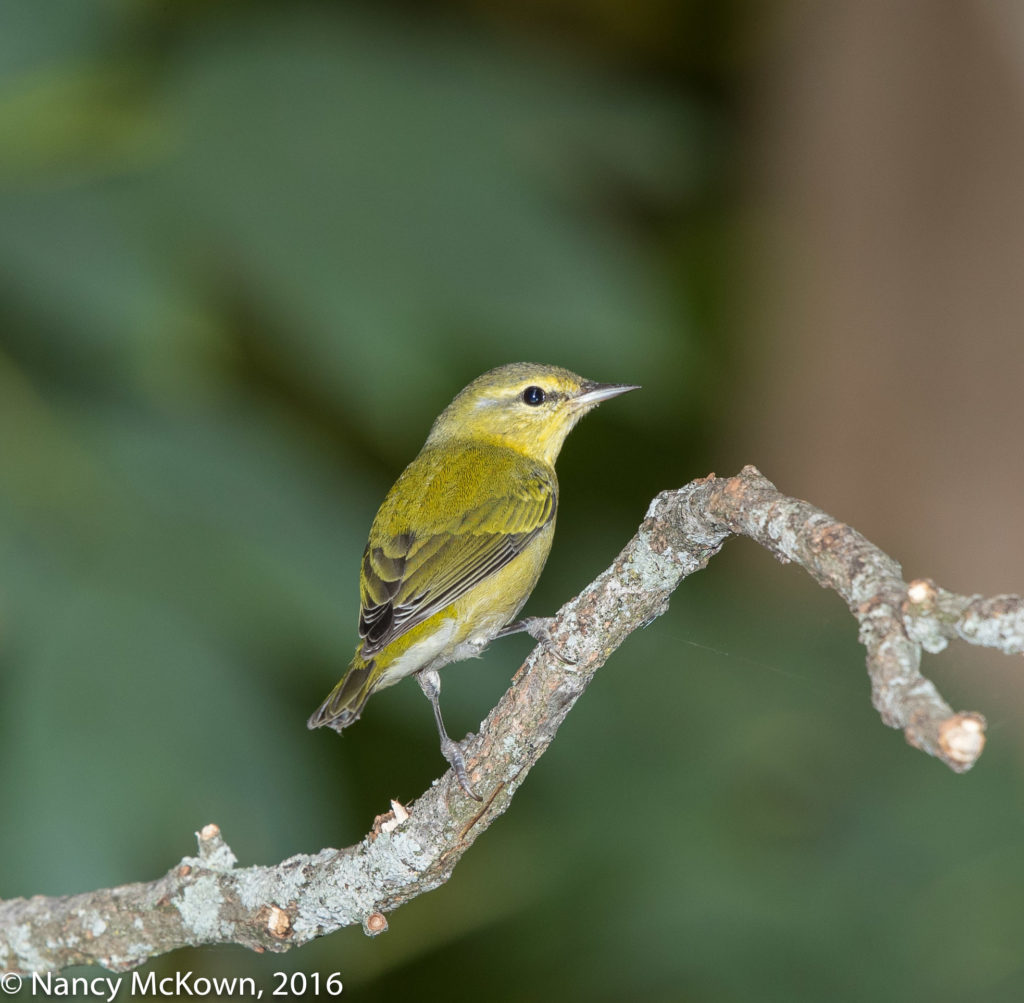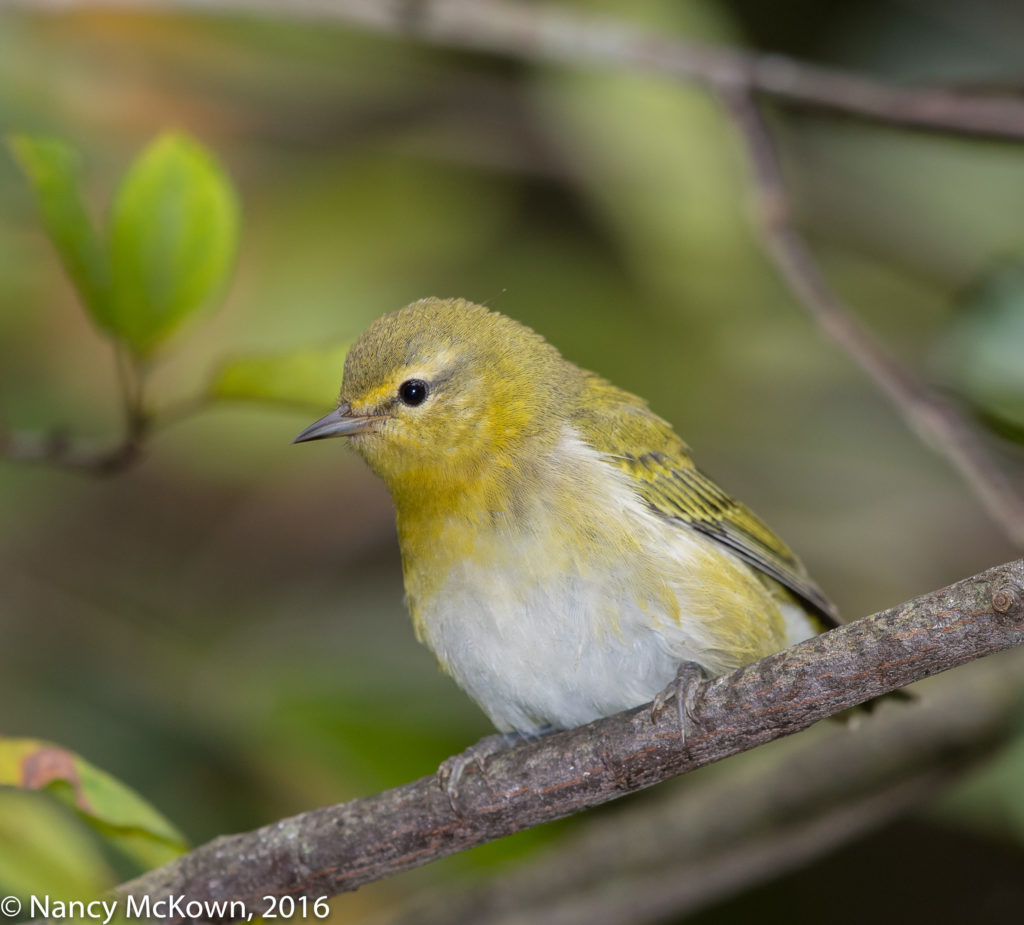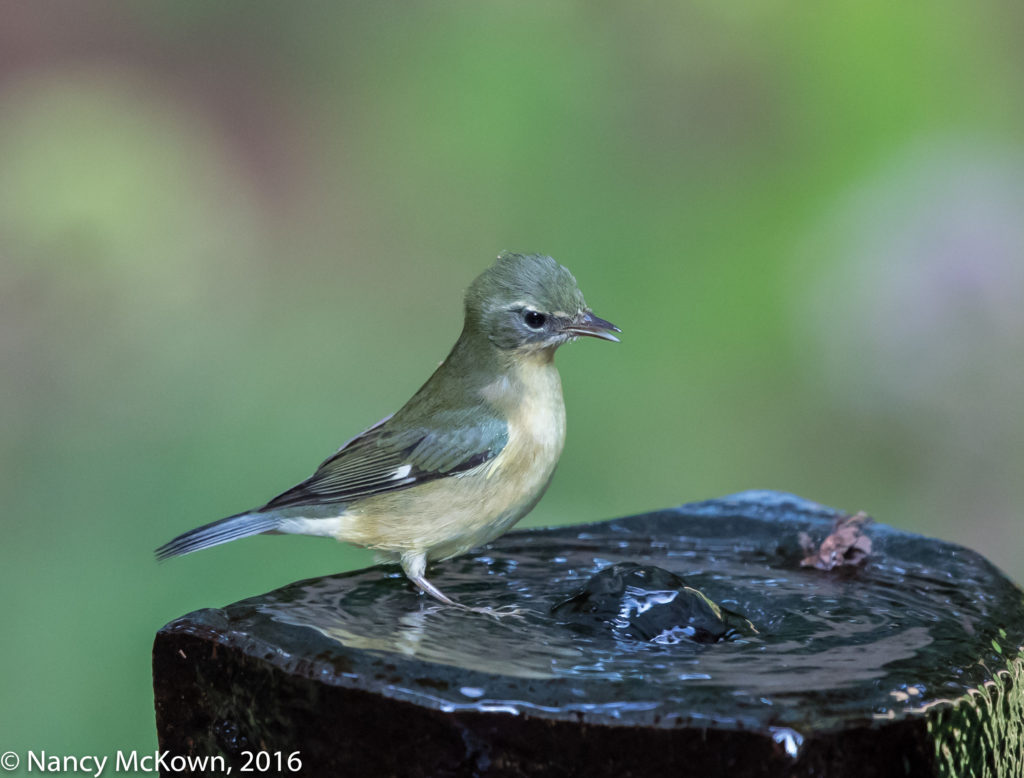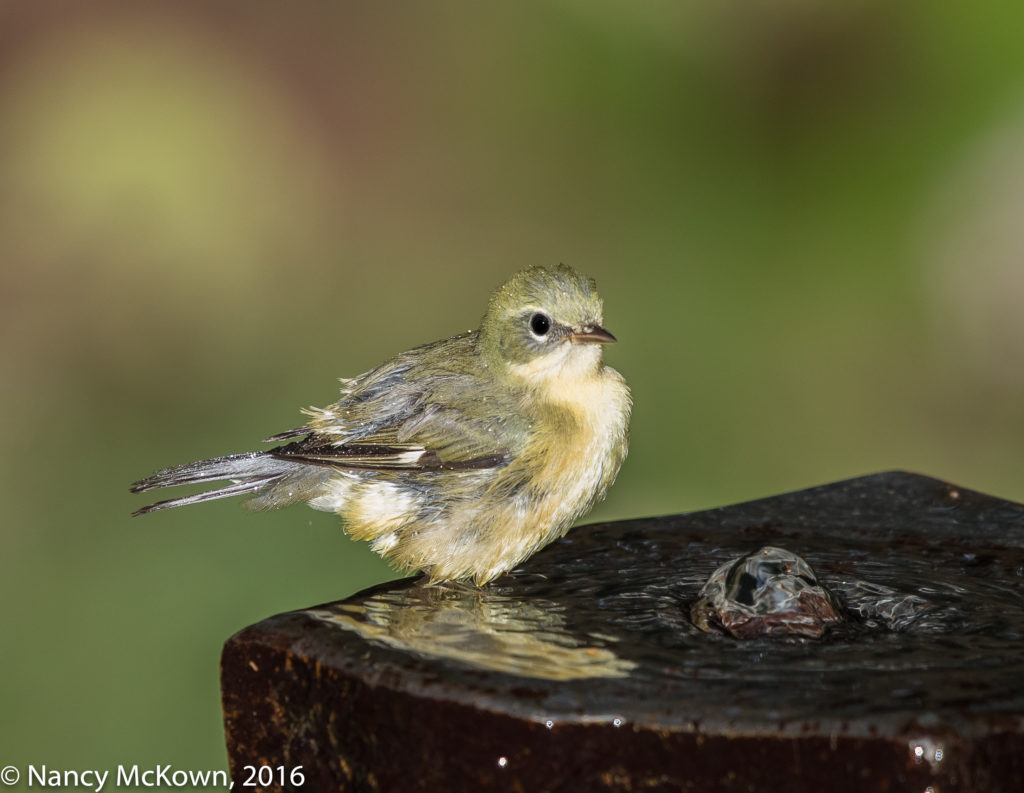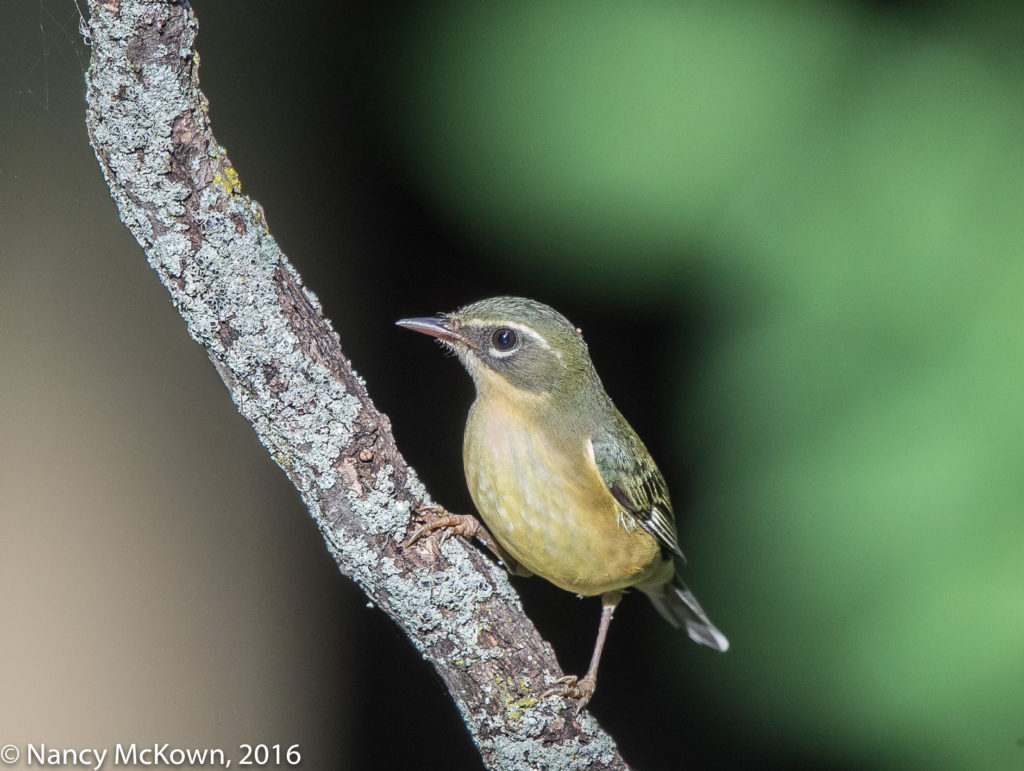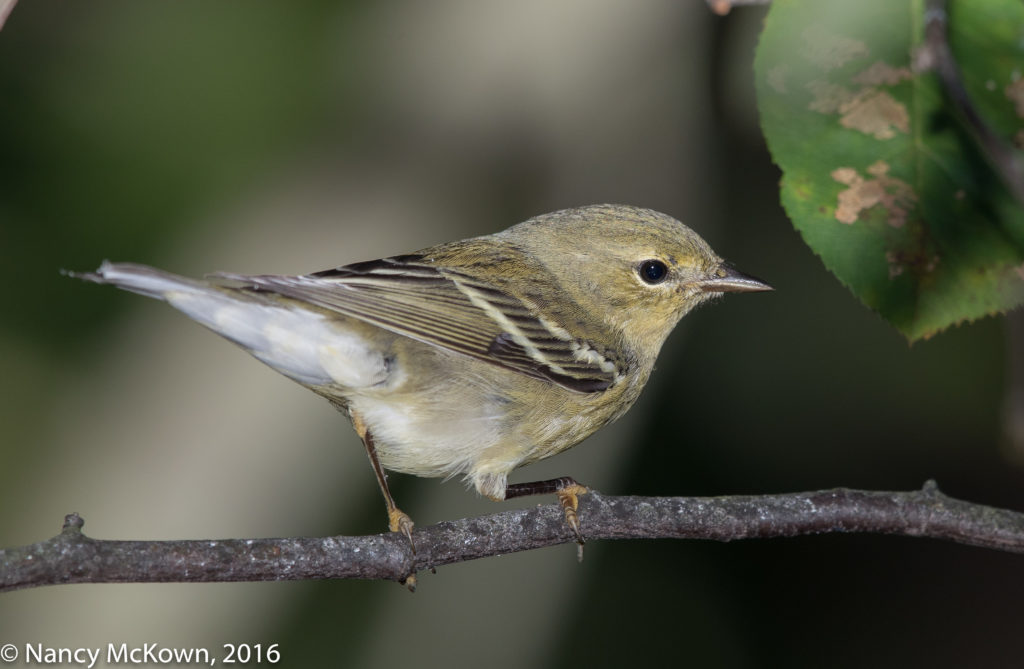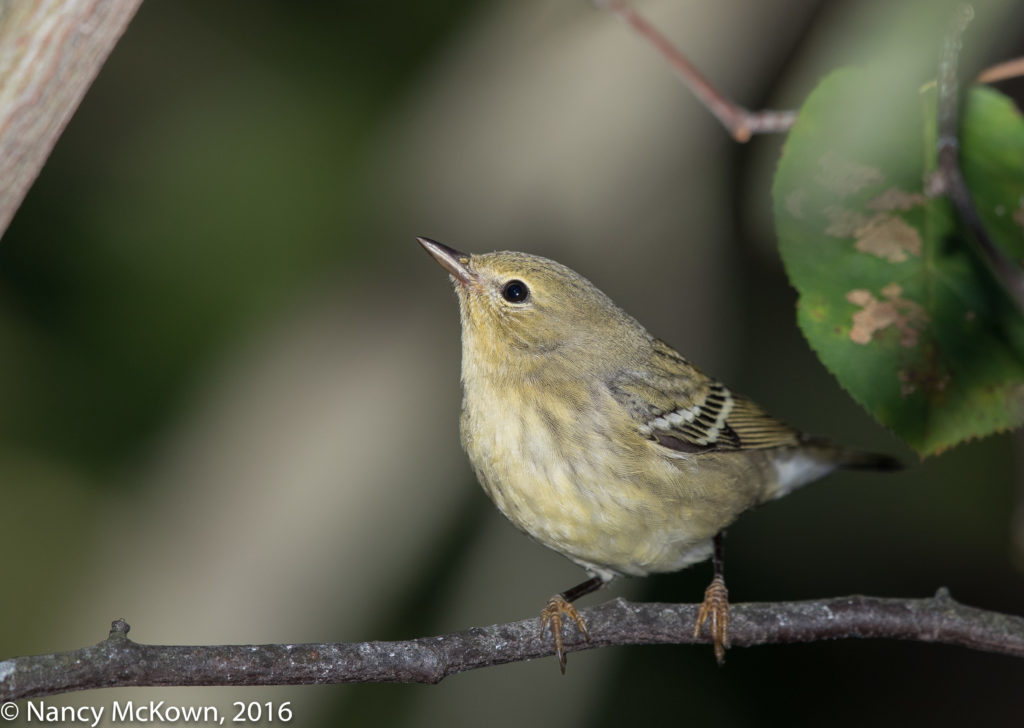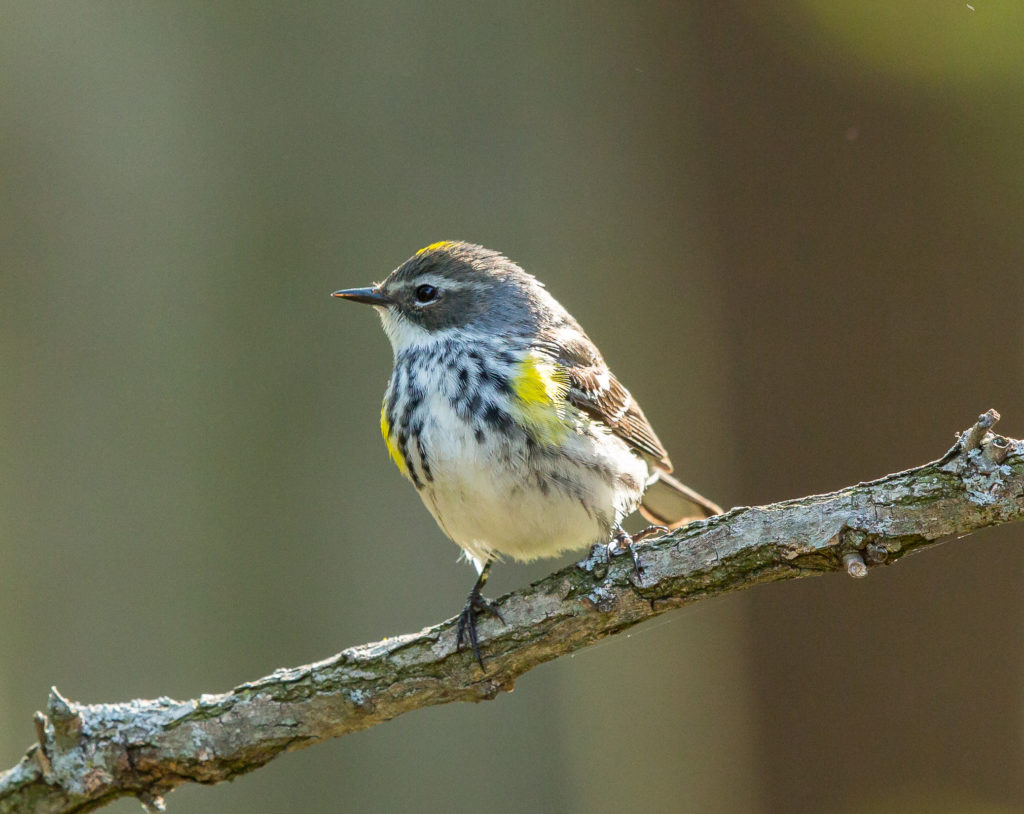Photographing Nashville Warblers
I have come to expect to see avian newcomers when the bird activity is busiest… perhaps crowds are a marker of safety in numbers. Despite the constantly moving assembly of birds, it’s pretty easy to spot warblers (profile, behavior, color, markings) as they congregate with the non-migrating bird species in our yard.
Every summer, we strategically placed just a few shiny metal yard ornaments to spruce up the gardens. They are slipped in amongst the ferns and bleeding hearts where they can glisten in the sun. I always hope that the birds will use them as perches.
This little Nashville Warbler with his bright daffodil breast came to momentarily rest on one of the bird-like ornaments. He looked it over with ease…(certainly not the wary stink-eye he used to scrutinize me). I got in 2 shots before he departed. The camera lens was aimed downward and set with a fairly tight (f/9) aperture. The telephoto flash balanced nicely with ambient light–making for a pleasant bokeh.

Garden Ornament.
ISO400; f/9; 1/250 Second
Photography and a Minimalist Lifestyle
As I assembled and set up the equipment for this shoot, I couldn’t help but reflect on the mountain of things that has become a part of what I do. Labor of love or not, this compulsion to buy one more tool in the hopes of acquiring that creative edge seems to never end.
Yea it’s me, taking the time to re-evaluate my buying habits and the attitudes, beliefs, and assumptions buried underneath acquiring all this camera gear. Seems like a good time now that the excesses of the holidays are upon us.
The Equipment Conundrum
Camera companies aggressively market consumer and pro grade equipment to photographers hoping to steer them onto a long and expensive road. I have listened to that seductive song, felt that fleeting rush of buying something new and convinced myself that each and every item I buy will improve my bird photography. I can even talk myself into buying something on an “I might need this later” basis. My only guarantee so far is that I am on track to own a mountain of out-of-date stuff.
(NOTE: It’s important to state up front that great bird photography is not necessarily a consequence of using expensive equipment.)
Less is Better Philosophy
Here are a few questions to consider in light of the less-is-better philosophy:
- What amount of photo equipment does it take for you to be successful as a bird photographer?
- What offers the most chance for growth, joy, a sense of calm and balance, interaction with friends, personal satisfaction, and accomplishment? (NOTE: Try to keep self aggrandizement out of the mix.)
- Is what you buy practical and worth the cost and effort you’ll be putting into hauling, storing and maintaining?
- Can any tool be a permanent solution with camera technology changing so fast?
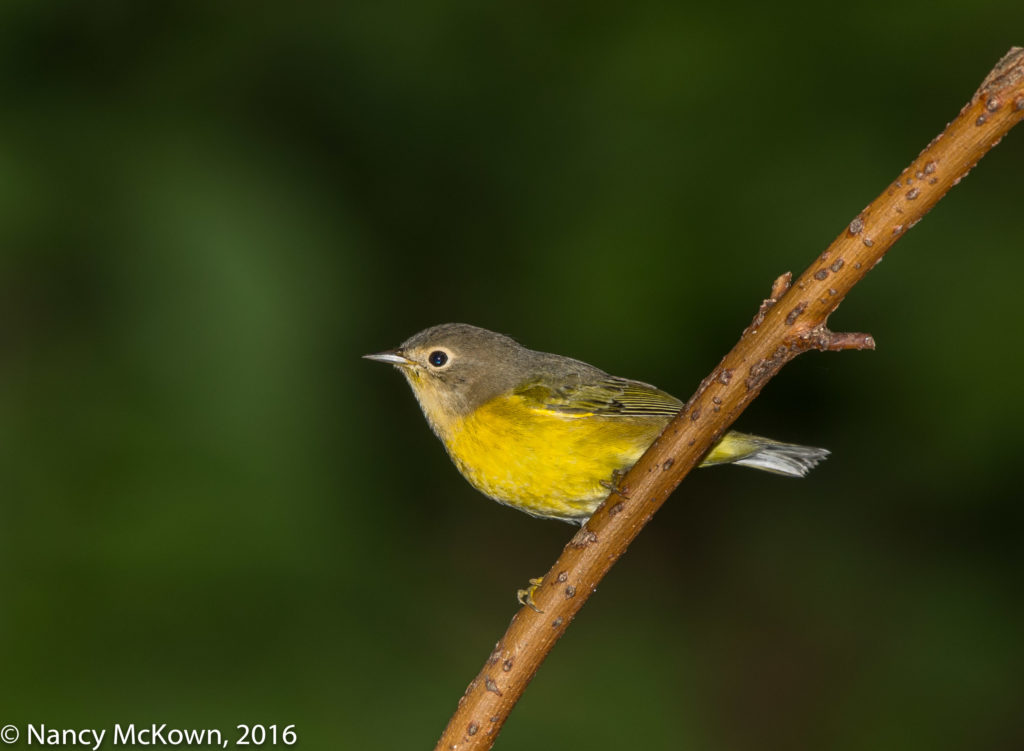
Posing on a lone branch near the fountain.
ISO400; f/9; 1/250 Second
Renewal Takes Time
Some photographers interpret minimalism not as an exercise to get rid of stuff, but as an intellectual challenge intent on reducing an image to its “essence” to capture its intrinsic nature and thereby create a simple and beautiful two dimensional scene.
I’m more interested in the renewal that comes with ranking and sorting and paring down what you have and what you want. Backing away from what may be obsessive behavior is a good idea, especially if it helps you to be more discriminating about image quality. It won’t happen over night, but it’s worth the investment, if only to avoid a depleted wallet.
Wishing you all a very Happy Thanksgiving.
